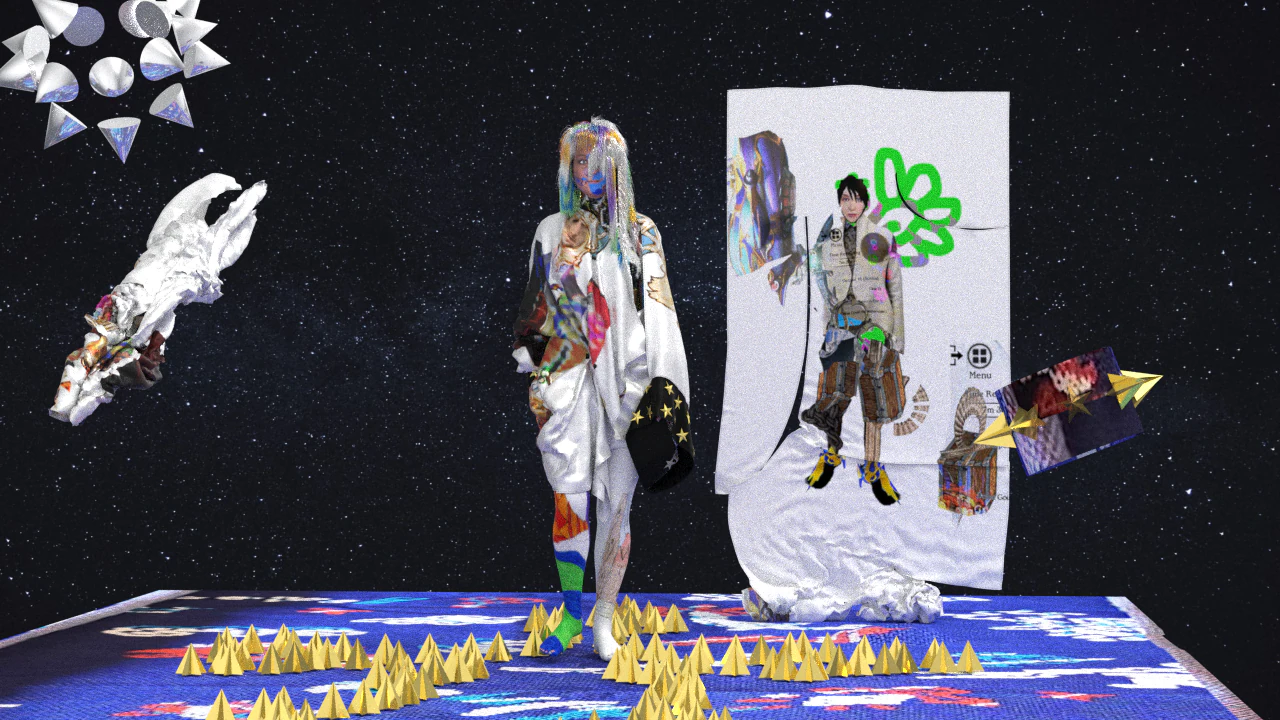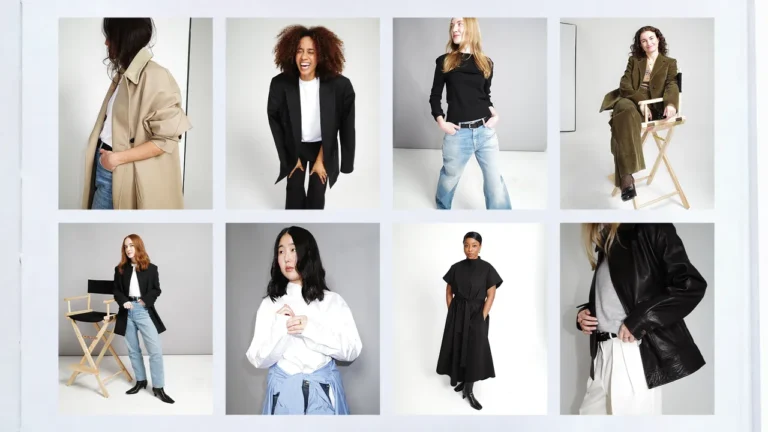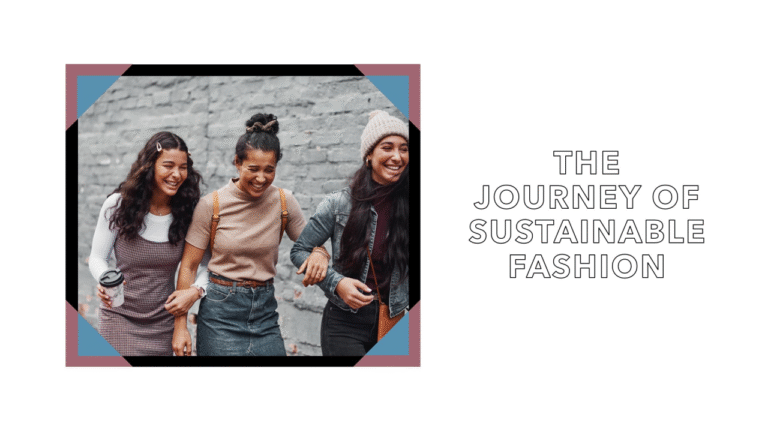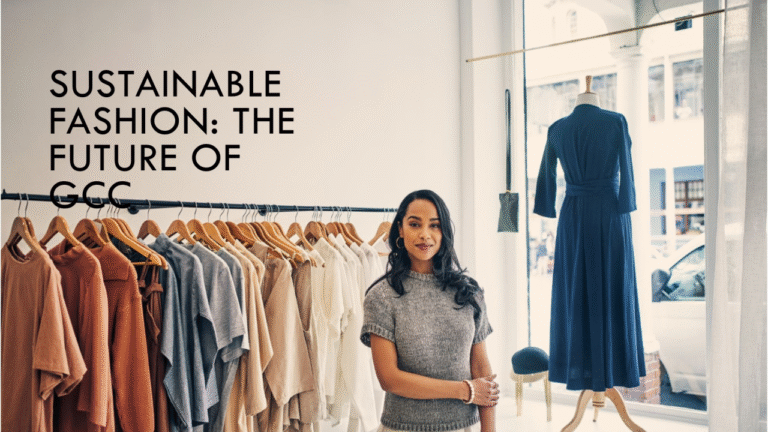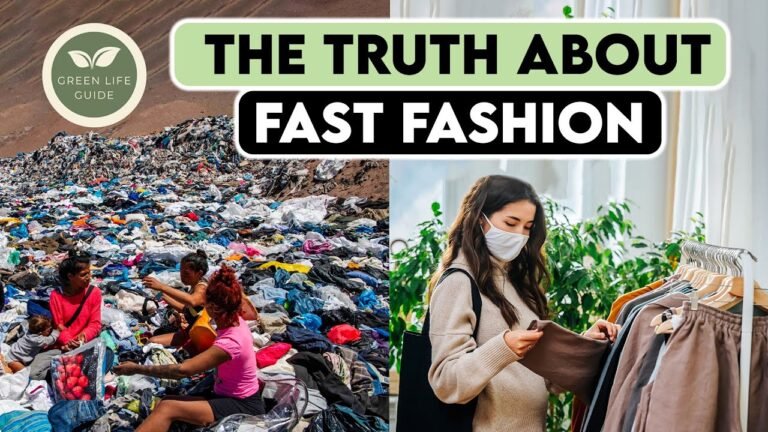The Dynamic World Of Fashion Trends Technology And Transformation
Chapter 1 The Sustainable Stitch Reshaping Fashion’s Footprint
The fashion industry, long associated with rapid trends and disposable garments, is undergoing a profound transformation. A growing global awareness of environmental and social impacts has spurred the rise of **eco-conscious fashion**, marking sustainability as not just a niche but a burgeoning standard for the entire sector.
At its core, this movement champions **ethical sourcing**. This means ensuring that materials are obtained responsibly, respecting both the planet and its people. It involves using sustainable fibers like organic cotton, hemp, or recycled synthetics, which drastically reduce water usage and pesticide reliance compared to conventional alternatives Source: Common Objective. Beyond raw materials, ethical sourcing extends to fair labor practices throughout the supply chain, guaranteeing safe working conditions and fair wages for garment workers Source: Good On You. For those interested in the raw materials, understanding how to understand fabric types is a crucial step in making informed choices.
Another pivotal aspect is **circular design**, a revolutionary approach aimed at minimizing waste and maximizing resource utility. Traditional linear fashion (take-make-dispose) is replaced with systems where products are designed for durability, repair, and eventual recycling or composting Source: Ellen MacArthur Foundation. This includes initiatives like rental services, resale platforms, and brands offering take-back programs for end-of-life garments, transforming textile waste into new resources instead of landfill burden. The focus shifts from constant newness to longevity and regeneration. This shift also encourages consumers to think about conscious consumption, moving away from fast fashion cycles, a concept explored further in articles like “I Stopped Buying Clothes”.
The push for sustainability is multifaceted. Environmentally, the fashion industry is a significant contributor to pollution, responsible for a substantial portion of global greenhouse gas emissions and considerable water consumption Source: UNFCCC. Consumers, especially younger generations, are increasingly demanding transparency and accountability from brands, influencing purchasing decisions Source: McKinsey & Company. Furthermore, evolving regulations, such as the European Union’s strategy for sustainable and circular textiles, are compelling brands to adopt more responsible practices Source: European Commission. For new ventures, integrating these principles from the start, as discussed in guides like “How to Start a Clothing Line or Clothing Brand,” is becoming essential. This collective movement signifies a fundamental shift: sustainability is no longer a luxury but an imperative, reshaping how fashion is created, consumed, and perceived, moving towards a more resilient and responsible industry.
Chapter 2 Tech-Driven Threads Innovation in Wearable Technology
The fashion industry is undergoing a significant transformation, with cutting-edge technologies redefining how garments are designed, produced, and experienced by consumers. From intelligent algorithms to advanced manufacturing techniques, innovation is weaving new threads into the fabric of style.
Artificial Intelligence (AI) The Brains Behind the Brand
Artificial intelligence is rapidly becoming an indispensable tool in fashion, optimizing everything from trend forecasting to personalized shopping. AI algorithms can analyze vast datasets, including social media trends, sales figures, and consumer preferences, to predict popular styles and inform design decisions [Source: Forbes]. This predictive capability helps brands create collections that resonate with their audience, minimizing waste from overproduction. Beyond design, AI enhances the customer journey through personalized recommendations, offering tailored style advice and product suggestions based on individual tastes and previous purchases [Source: IBM Research]. It can even assist in supply chain management, improving efficiency and reducing lead times.
3D Printing Crafting the Future of Fashion
Additive manufacturing, or 3D printing, is revolutionizing how fashion is physically created. This technology allows designers to produce intricate and complex geometries that are challenging or impossible with traditional methods, leading to innovative footwear, accessories, and even entire garments. Brands like Adidas have utilized 3D printing for custom shoe midsoles, offering unparalleled comfort and performance [Source: Forbes]. For designers, 3D printing accelerates the prototyping process, allowing for rapid iteration and customization. On a production level, it promotes sustainability by enabling on-demand manufacturing, which reduces material waste and inventory [Source: Toptal].
Smart Textiles Fashion That Interacts
Beyond aesthetics, clothing is becoming functional and interactive thanks to smart textiles. These innovative fabrics integrate digital components—like sensors, microcontrollers, and conductive threads—directly into the material, transforming garments into wearable technology [Source: World Economic Forum]. Applications range from health and wellness monitoring (tracking heart rate, body temperature, or sleep patterns) to performance enhancement (fabrics that regulate temperature or adapt to environmental changes). Smart textiles can also offer dynamic aesthetics, such as garments that change color or light up, creating a new dimension of personal expression [Source: Business of Fashion]. Understanding the composition and function of these advanced materials is key for any fashion enthusiast looking to stay ahead of the curve. For more on fabric types, explore our guide on How to Understand Fabric Types.
Virtual Reality (VR) Immersive Experiences
Virtual reality is reshaping the consumer experience, bringing the fashion world into a new dimension. VR enables immersive virtual try-on experiences, allowing customers to visualize how garments look and fit on their digital avatars before making a purchase, significantly reducing returns for online retailers [Source: McKinsey & Company]. Beyond individual shopping, VR is transforming fashion events; brands are hosting digital fashion shows and virtual pop-up stores in the metaverse, making their collections accessible to a global audience without physical limitations [Source: World Economic Forum]. This not only enhances engagement but also provides innovative ways for consumers to interact with brands and their latest designs.
Chapter 3 Decoding Trends From Street Style to Global Influence
Fashion trends are not simply born on the runway; they are a complex interplay of cultural shifts, consumer behavior, and global events, meticulously observed and predicted by industry experts. Understanding how these elements converge reveals the fascinating journey from emerging street style to worldwide influence.
The Art and Science of Trend Forecasting
Fashion trend forecasting is a sophisticated discipline that involves anticipating consumer preferences and emerging styles years in advance. Agencies like WGSN and Fashion Snoops employ a blend of art and science, analyzing vast amounts of data to predict what will be “in vogue.” Their methodologies include tracking socio-economic developments, political climates, technological advancements, and cultural movements, alongside analyzing current collections, street style, and consumer purchasing patterns [Source: WGSN]. Forecasters look at everything from art exhibitions and music festivals to global crises and scientific breakthroughs to identify shifts in mood and values that will translate into design, color palettes, and silhouettes. This comprehensive approach helps designers and brands make informed decisions about future collections, as seen with predictions for what colors will dominate in 2025 or broader spring 2025 fashion outlooks.
The Powerful Role of Social Media and Influencers
The advent of social media has revolutionized the pace and spread of fashion trends, democratizing what was once a top-down process. Platforms like Instagram, TikTok, and Pinterest allow trends to emerge from the grassroots, often from everyday individuals or micro-influencers whose authentic styles resonate with their followers [Source: Forbes]. Influencers, ranging from celebrities to digital content creators, showcase new looks, brands, and styling ideas, directly impacting consumer purchasing decisions. A single viral post can catapult a niche item, like the Adidas Samba sneaker, into global demand overnight. This direct-to-consumer influence creates a rapid feedback loop, allowing brands to quickly gauge interest and adapt. Fashion weeks still hold significant sway, but the real-time engagement and immediate visibility offered by social media mean that street style captured outside the shows can be just as, if not more, impactful than the runway looks themselves.
How Global Events Shape What’s in Vogue
Beyond aesthetics and algorithms, global events profoundly influence fashion. Economic downturns often lead to a demand for versatile, durable pieces and a focus on conscious consumption, while periods of prosperity might encourage more flamboyant or experimental styles. Public health crises, like the COVID-19 pandemic, shifted demand towards comfortable loungewear and athleisure, reflecting new lifestyles centered around home [Source: The Business of Fashion]. Social justice movements inspire collections that prioritize inclusivity, sustainability, and ethical production. Even political shifts can subtly influence fashion, with a return to classic, conservative styles during times of uncertainty, or a surge in expressive, rebellious looks during periods of social unrest. For example, a heightened awareness of environmental issues has fueled the rise of sustainable fashion practices and an emphasis on timelessness, as seen in the enduring appeal of concepts like the “old money” aesthetic, which champions quality and longevity over fleeting fads. These macro-level changes filter down, shaping everything from fabric choices to the overall mood of a collection, proving that fashion is always a reflection of the world around us.
Chapter 4 The Business of Style Economics Behind the Glamour
The global fashion industry, valued at over 2 trillion U.S. dollars in 2024, is a complex economic engine driven by intricate supply chains, dynamic retail strategies, and an ever-evolving consumer landscape. Beyond the glamour of runways and celebrity endorsements lies a sophisticated business ecosystem.
The Intricacies of Fashion Supply Chains
The journey of a garment from concept to consumer is a marvel of global logistics. Fashion supply chains are notoriously complex, involving raw material sourcing, design, manufacturing, logistics, and distribution across continents. Key players include textile producers in Asia, design houses in Europe, and manufacturing hubs spanning from Vietnam to Portugal [Source: Mordor Intelligence]. Challenges within these chains include ensuring ethical labor practices, managing fluctuating material costs, and navigating global trade policies. There’s also a growing push for sustainability, with brands seeking to reduce their environmental footprint through circular economy models and transparent sourcing [Source: McKinsey & Company]. Understanding fabric types and their origins is becoming increasingly important for brands and consumers alike.
Evolving Retail Strategies
Retail in fashion has undergone a dramatic transformation. Traditional brick-and-mortar stores, once the sole point of sale, now often serve as experiential hubs, complementing robust online presences. Fast fashion retailers like Shein and Zara have mastered rapid production cycles to deliver trendy items quickly and affordably [Source: Business of Apps]. In contrast, luxury brands often focus on exclusivity, craftsmanship, and a personalized shopping experience, whether in flagship stores or through curated online platforms. Omnichannel strategies, blending online and offline touchpoints, are paramount, allowing consumers to seamlessly browse online, try on in-store, and pick up or return items with ease. Successful retailers also pay close attention to style strategies that good shoppers use to enhance customer satisfaction.
The E-commerce Revolution
The rise of e-commerce has fundamentally reshaped the fashion landscape, making fashion more accessible than ever. It has empowered direct-to-consumer (DTC) brands, allowing them to bypass traditional retail channels, reduce overheads, and build direct relationships with their customers [Source: Shopify]. This digital shift has also spurred innovation in digital marketing, with social media influencing purchasing decisions through influencers, user-generated content, and targeted advertising. Virtual try-on technologies and augmented reality are emerging to bridge the gap between online browsing and the physical experience of trying on clothes. For businesses looking to grow, understanding how to start a clothing line or brand in this digital age is crucial, often involving strong business partnerships and effective marketing videos.
The Evolving Consumer Landscape
Today’s fashion consumer is more informed, discerning, and demanding. There’s a growing emphasis on ethical consumption, with consumers increasingly prioritizing brands that demonstrate transparency, fair labor practices, and environmental responsibility [Source: Statista]. Personalization, driven by data analytics and AI, allows brands to offer tailored recommendations and experiences, catering to individual style preferences. The influence of social media continues to dictate current fashion trends, with viral looks and micro-trends emerging rapidly. Consumers are also looking for longevity and versatility in their wardrobes, opting for pieces that can be styled in multiple ways and stand the test of time, aligning with a desire to design clothes with a lifestyle in mind rather than just fleeting fads. This dynamic interplay of production, distribution, and consumer demand ensures that the business of style remains one of the world’s most captivating and economically significant industries.
Chapter 5 Fashion’s Cultural Canvas Identity History and Expression
Fashion transcends mere utility, serving as a profound reflection of society’s intricate tapestry, a powerful medium for individual expression, and a vibrant canvas for cultural identity and social commentary. Throughout history, what people wear has mirrored prevailing social norms, economic shifts, and political landscapes, acting as a visual chronicle of human civilization.
Fashion as a Societal Mirror
From the opulent silks of ancient empires denoting status to the utilitarian garments of wartime, fashion has consistently reflected the broader societal context. During the Roaring Twenties, the flapper dress symbolized the liberation of women and a breaking away from Victorian constraints after World War I, marking a shift towards modernity and social freedom [Source: The Metropolitan Museum of Art]. Conversely, the austerity of the Great Depression saw a move towards simpler, more practical clothing. Later, the counter-culture movements of the 1960s and 70s used fashion, from miniskirts to bell-bottoms, to challenge established norms and express desires for peace and individualism [Source: Victoria and Albert Museum].
The Power of Self-Expression
Beyond reflecting societal trends, fashion is an intimate act of self-expression. It allows individuals to communicate their personality, beliefs, and aspirations without uttering a single word. A carefully chosen outfit, a bold accessory, or a particular color palette can convey confidence, creativity, or rebellion. Personal style becomes a visual language, shaping how one is perceived and how one perceives themselves. This conscious choice in dressing is akin to designing clothes with your lifestyle in mind, ensuring alignment between inner self and outer presentation.
Weaving Cultural Threads
Fashion plays a critical role in shaping and preserving cultural identity. Traditional garments, passed down through generations, are often imbued with symbolic meaning, representing heritage, community, and national pride. For example, the vibrant patterns of a Japanese kimono or the intricate embroidery of a Nigerian agbada tell stories of ancestry and tradition [Source: Fashion Studies]. Furthermore, subcultures worldwide adopt distinct styles to forge a sense of belonging and express collective identities, from the edgy aesthetic of punk to the relaxed confidence of hip-hop attire. Even modern trends like the “old money aesthetic” or monochrome fashion reflect specific cultural aspirations or aesthetics.
Social Commentary and Activism
Fashion has a long history as a powerful tool for social commentary and activism. Throughout various movements, clothing has been strategically utilized to make political statements, challenge injustices, or advocate for change. The suffragettes, for instance, famously wore white to symbolize purity and align themselves with angelic virtues, making a striking visual statement during their protests [Source: Vogue]. More recently, designers and brands have used their platforms to address issues like sustainability, gender equality, and racial justice, turning runways into forums for dialogue and awareness. This ongoing evolution ensures that current fashion trends continue to reflect and influence contemporary discussions.
In essence, fashion is far more than just clothing; it is a dynamic cultural canvas that continually captures the essence of who we are, where we’ve been, and where we’re going.
Sources
- Business of Apps – Shein Statistics
- Business of Fashion – Fashion’s Pandemic Shift
- Business of Fashion – Smart Textiles: Wearable Tech & Fashion Innovation
- Common Objective – What is Ethical Fashion
- Ellen MacArthur Foundation – Fashion: Overview
- European Commission – EU Strategy for Sustainable and Circular Textiles
- FashionNova.cyou – 23 Adidas Samba Outfits That Prove This Sneaker Is a Must-Have
- FashionNova.cyou – 4 Style Strategies That All Good Shoppers Use
- FashionNova.cyou – 10 Top Fashion Week Trends to Shop Now According to the Street Style Scene
- FashionNova.cyou – Current Fashion Trends: Embrace Elegance With The Fashion Conservateur
- FashionNova.cyou – How to Design Clothes With Your Lifestyle in Mind
- FashionNova.cyou – How to Start a Clothing Line or Clothing Brand: The Definitive 2024 Guide by Lokesh Jain
- FashionNova.cyou – How to Understand Fabric Types
- FashionNova.cyou – I Stopped Buying Clothes
- FashionNova.cyou – Monochrome Fashion: The Timeless Elegance of One-Color Dressing
- FashionNova.cyou – Navigating Business Partnerships: Your Comprehensive Guide to Success
- FashionNova.cyou – The Art of Dressing Old Money in 2025: Timeless Elegance Meets Modern Sensibilities
- FashionNova.cyou – The Four Easy Peasy Key Elements of Every Marketing Video
- FashionNova.cyou – The Trendy But Classic Spring Capsule Wardrobe 2025: A Timeless Approach to Modern Style
- FashionNova.cyou – What Colors to Look Out For in 2025
- Fashion Studies – Fashion and Identity
- Forbes – The Future of Fashion: How AI Is Reshaping The Industry
- Forbes – How Social Media Influences Fashion Trends
- Good On You – What is Ethical Fashion
- IBM Research – AI in Fashion
- McKinsey & Company – The State of Fashion 2023: Navigating Disruption Amidst Uncertainty
- McKinsey & Company – The State of Fashion 2024: A Year of Transition
- McKinsey & Company – Virtual Reality and Fashion: How the Metaverse is Reshaping the Industry
- The Metropolitan Museum of Art – A History of Fashion
- Mordor Intelligence – Textile and Apparel Logistics Market
- Shopify – What is DTC E-commerce?
- Statista – Fashion Market Worldwide
- Statista – Consumer Willingness to Pay More for Sustainable Fashion
- Toptal – Fashion Industry Technology Trends
- UNFCCC – UN Fashion Alliance Launches New Decarbonization Targets
- Victoria and Albert Museum – Fashion and the Youthquake of the 1960s
- Vogue – The History of Suffragette White in Fashion
- World Economic Forum – Smart Textiles: Wearable Technology & The Future of Fashion
- WGSN – The Future of Fashion: Trend Forecasting
Conclusion:
Fashion today is a dynamic blend of sustainability, technology, culture, and commerce—reshaping not only how we dress but also how we live, consume, and express identity. It stands as both a mirror of society and a driver of global change.

